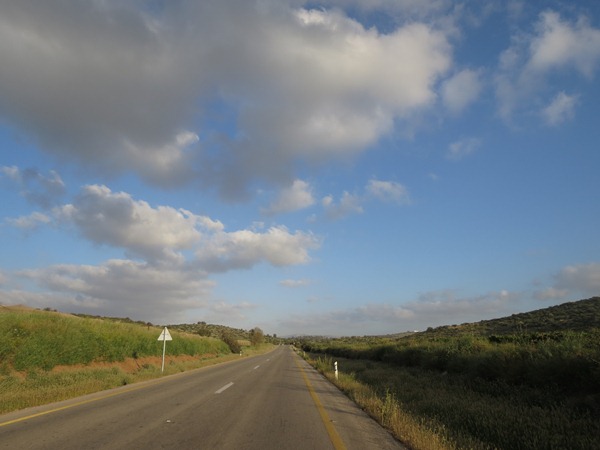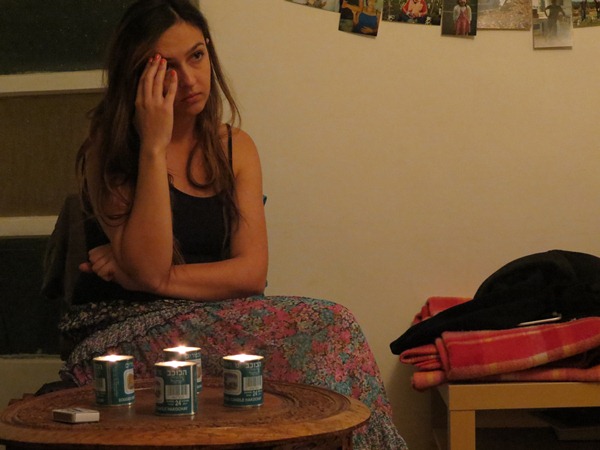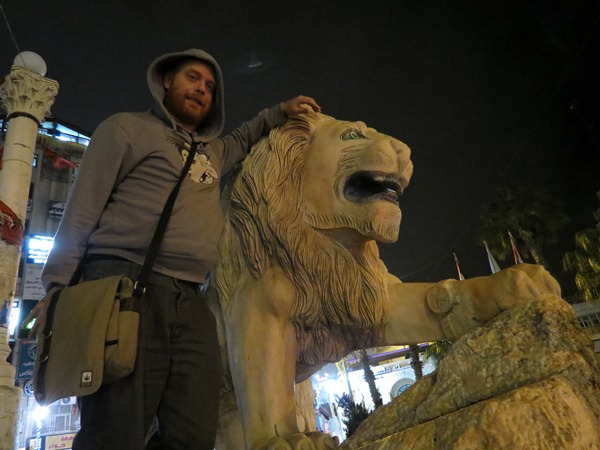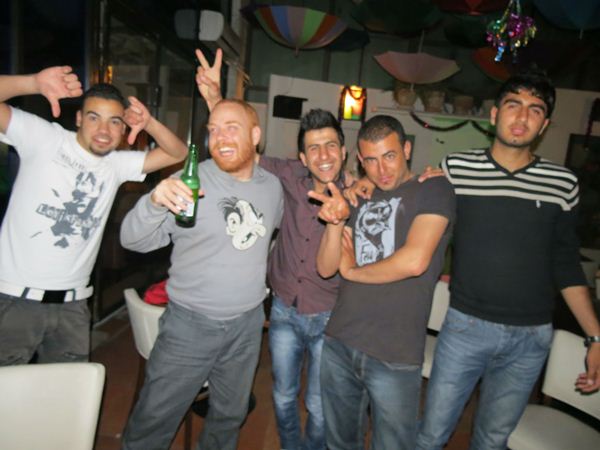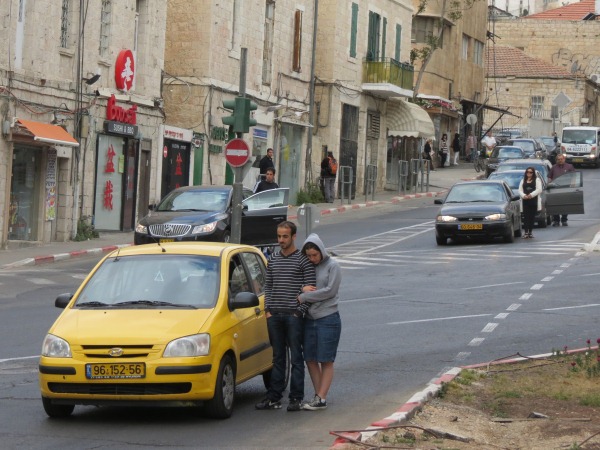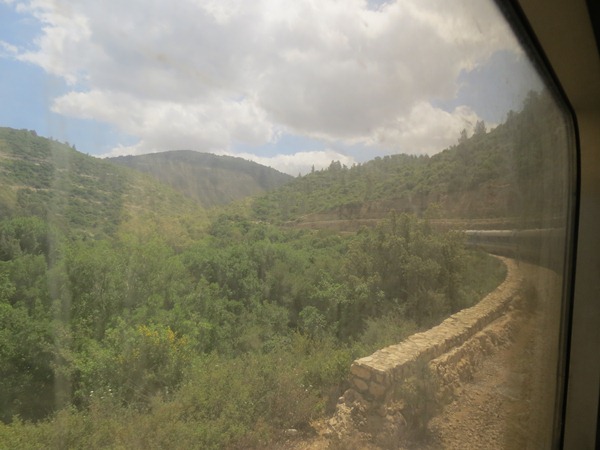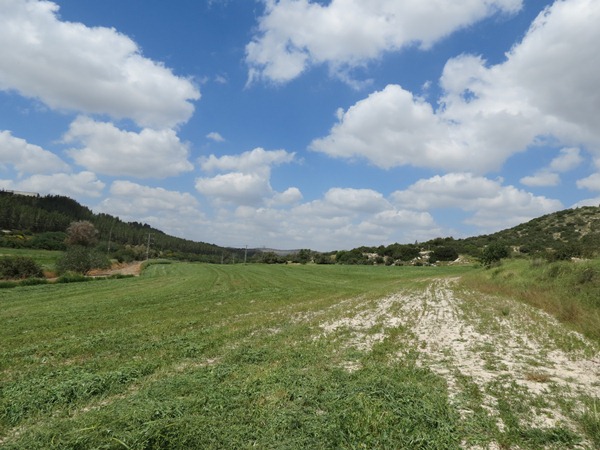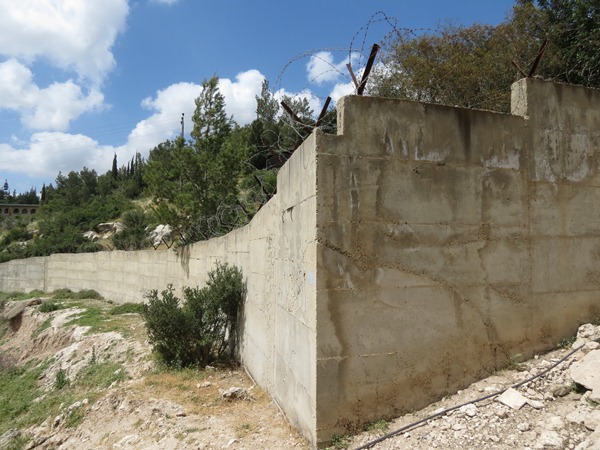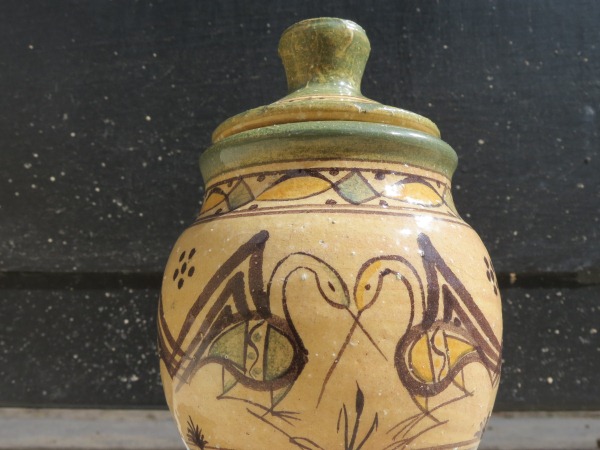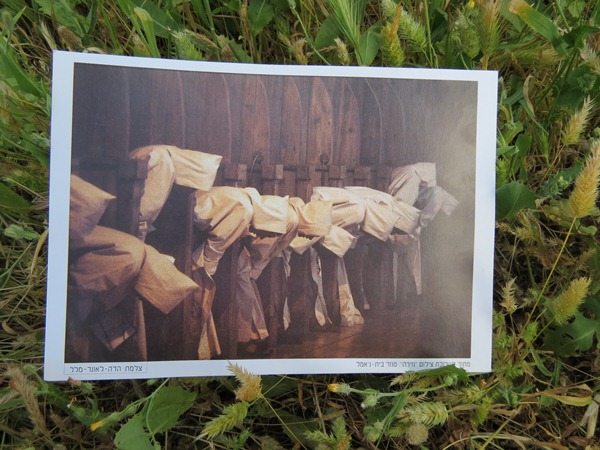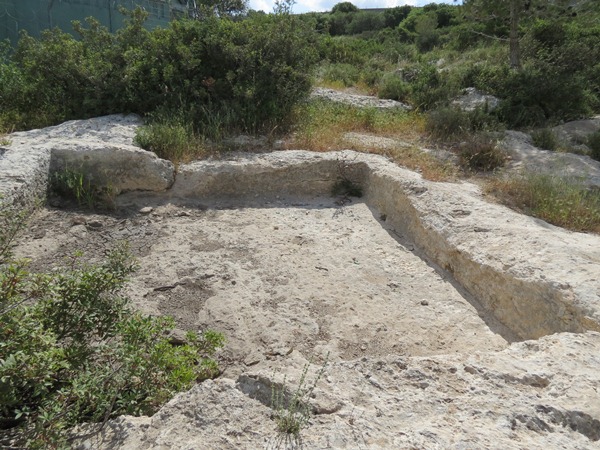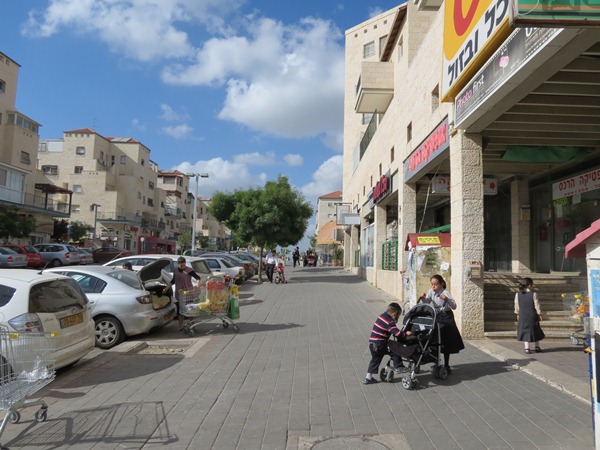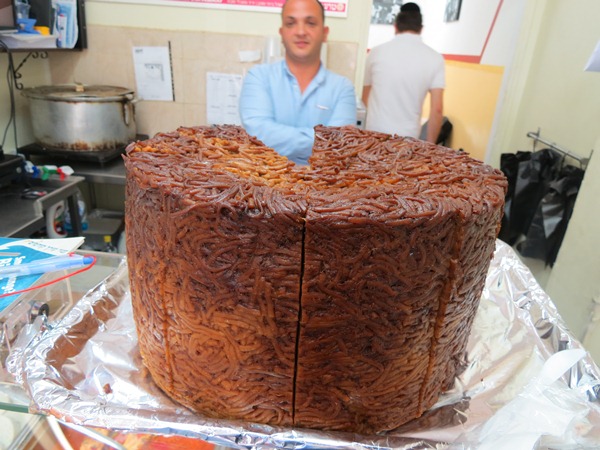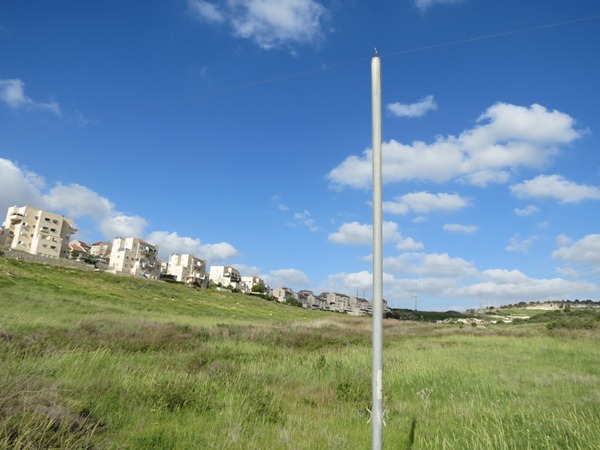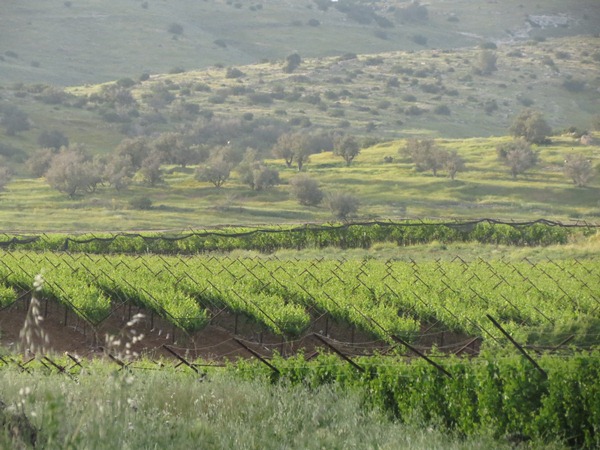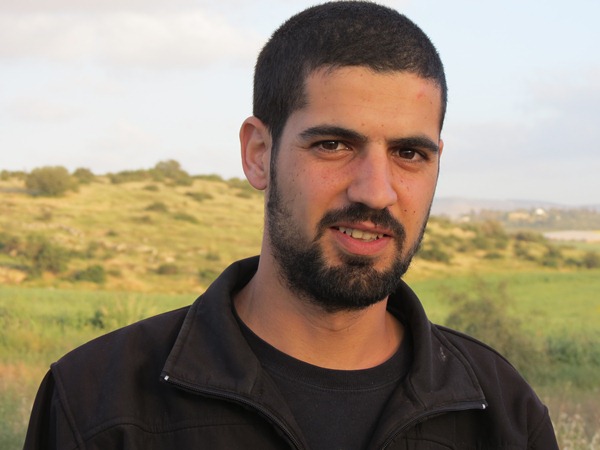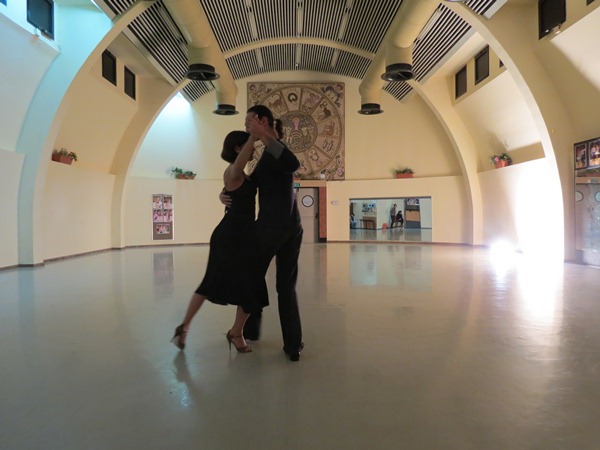From Jerusalem to the Lachish hills via a silent house of white robes, a Jewish Afghanistan and a Argentinian dance class.
As the sun sets over Jerusalem, Holocaust Remembrance Day officially begins. It begins with a disaster: The wild wind of that sand storm toppled a stainless steel tower that held a light fixture above Mount Herzl. There, by the tomb of national Zionism’s founder, a televised commemorative ceremony was to be held, but the collapse killed one 20-year-old female officer and left five others wounded, and it is now unclear what will be of the event.
Having touched down on Jerusalem’s southernmost point, I return into the city’s heart and pay a visit to the home of my beloved friend Daniella and her roommate Inna. Ezra joins us here and the four of us hold a small intimate commemorative session, lit by safe candles that the worst wild winds can only extinguish. Each one of us has Ashkenazi Jewish roots and a small story to tell of his or her family’s fate.
The tale of my grandfather’s vanished parents and siblings was mentioned twice already along this journey. To tell it in earnest would take an entire night and it will be a dark night. Suffice it to say that we eventually learned the of fate of one sister, Eva, who was enslaved by the German sewing machine company Singer. Eva was held in Singer’s own concentration camp in Trutnov, today in the Czech Republic. She died of typhus the day the camp was liberated. A monument was erected over the mass grave in which she was thrown, but was desecrated by neo-Nazis just as the story reached her living kin.
My family helped renovate the monument and later brought my grandfather to her grave. We all stood in tears, listening to him speak to her. I later thanked him for speaking in Hebrew, a language we could all understand, even though Eva spoke only Hungarian. “You know what,” he said, “it didn’t occur to me. I’ve been living in Hebrew for sixty years now.”
Ezra is living in Hebrew on a tiny Hebrew island, entirely surrounded by Arabic. He has never even been to the city of Ramallah, walking distance from the settlement, and has always been curious about it. I know a safe way in and out of Ramallah’s Area A, so tonight we go.
The man is more than a bit nervous and more than a bit excited. He pickes a foreign identity: that of a Russian named Misha, and drills me about the city: How big is it? How friendly to strangers? He also mentions the lynching of two IDF soldiers which took place in Ramallah in the year 2000, I remind him that those were uniformed soldiers who are regarded as an immediate enemy, and that the tensions of the onset of the second intifada were considerably higher than they are today. I also mention that two days previously, the IDF killed the child Mohammed al-Dura in Gaza. This is a detail the Israeli public was made to forget: The sick, terrifying event was driven by rare mass hysteria.
“But what if something happens now? What if Israel nukes Gaza while we’re on the road there?”
“Then we’re doomed anyway.”
“And what if they check my car and see that it is registered at a settlement?”
“They won’t check your car. Ramallah is full of yellow license plates. Palestinian Israelis and East Jerusalemites can go in legally.”
Convinced or not, Ezra is determined to go, if only in order to watch Barcelona play Chelsea at the Champions League semifinals. The match is not broadcast in Israel even on cable, on account of Holocaust Remembrance Day, and I must agree that watching a proper Barcelona match at this time in the team’s history is worth the risk of being lynched. Ramallah is the answer, and Ezra has only one more question: “What currency is used there?”
He is not the only Israeli not to know this. “Shekels. They live under occupation.”
We drive past the wall in Qalandia, where cars aren’t checked, and soon arrive at Al Manara square. An hour ago we sat around the candles, and Ezra told us of his family’s escape to Uzbekistan during the German conquest of the Ukraine. Now we are in the green glow of a sign that reads “Stars & Bucks Cafe,” where I show him the lion with the wristwatch.
Legend has it that the sculptor doubted the city would pay him on time for the lions it commissioned. He endowed the lion with a symbol of impatience, and declared that he would chisel it away once the money arrived. The watch never got chiseled off.
We watch Barcelona failing to chisel away at Chelsea’s defence and make friends with other costomers at the bar. They don’t know us to be Israelis, and certainly not a present settler and a former settler. (As mentioned in the September Journey, I grew up on French Hill in East Jerusalem.) Still, I find this blurry end-of-the-night image very moving.
It is at that Ramallah bar that my computer fails to turn on. When I arrived at Daniella’s house, I plugged it into the wall and shorted the electicity in the entire house. Now it appears that my charger fell victim to this incident. This depresses me far more than Barcelona’s loss. I will have to waste a half a day in Jerusalem tomorrow, despite not having any margin of error on this journey’s schedule, and buy a new charger for 200 shekels I don’t have.
Dear readers, this is where I appeal to you once more to take part in this journey by contributing to it. My fundraising goal was $1,500. So far, generous readers to whom I’ll always be grateful have donated about one-third that sum, and unexpected costs keep popping up: First the camera died, now the charger. Transportation expenses are higher than I had expected, despite all the hitching and walking and the hot, sparsely populated southern regions still await. I need your help now more than ever in order to complete this project, and I am deeply indebted to all who have helped and will help.
The 200 shekels exchange hands the following morning at a West Jerusalem computer store. Ezra and I stand outside its doors at 10:00, when the traditional Holocaust Remembrance Day siren is heard throughout the country. The siren sounds for two minutes, during which everything comes to a complete halt. Pedestrians stop walking. Patients rise from the dentists’ seats to respect the moment, all conversation falls silent. (including much Arabic conversation: When living in Jaffa I saw how Palestinian-Israelis respect this moment.) Cars stop clear in the middle of the road, the drivers and passengers step out of them and stand in silence. If the sight of this Jerusalem street is unusual, imagine the freeway.
The siren dies and it’s time to go back on the road. I take the train southwest from Jerusalem. The Green Line was charted here along the rails, which remained just within Israel, and here it can truly be said to be green.
The foothills are wonderfully green too. Here is a fertile land of great beauty, surrounding a town somewhat less beautiful: the sprawling working-class Jewish city of Beit Shemesh, missing from this frame for the reader’s sake.
I walk in the hills, two feet of mine on the green grass against one foot of each stork I pass. Then there arrives a barrier which storks would find meaningless, but my two feet are powerless to cross. It is a massive wall of concrete, topped with barbed wire.
No, this is not the separation barrier. That would be found several kilometers to the east. This wall before me happens to enclose a terrifically gentle environment: the French half of the Beit Jamal monastery.
Beit Jammal’s original, historical monastery, is found next door. It is a charming but not very unusual place where Franciscan monks dwell. The adjacent French abbey, however, is truly unique. it belongs to the mysterious order of the Sisters of Bethlehem and of the assumption of the Virgin and of St. Bruno (to be said in a single breath). The nuns, who take a severe oath of silence, dress in purely white hooded robes and look like bleached out, female Obi Wan-Kenobis.
The environment in which they silently tread is an extremely appealing, shaker-simple stone and pine-wood complex. It focuses around a chapel empty of pews, where praying nuns are hidden from one another by wooden dividers. It is a strange church. It is indeed a strange place, the home of an isolated sect that happens to share a thing or two with mainstream Catholicism, but there is some strong, irresistible magic about it and in certain moments of the year, such as Christmas eve, when the nuns fall to the floor with the ecstasy of devotion and the candlelit corridors are flooded with their singing, it is life-altering.
All photography is prohibited inside. I plead with Maritte, one of the sisters, to allow me at least one shot. She cannot allow it, but is open and kind and free to break her silence with strangers, and she readily shares with me her personal history.
Maritte grew up in Marseille, worked as a teacher and reached the age of 31 before donning the white robe. Her parents haven’t gotten used to the idea. Over the three years that she lives in Beit Jamal, they have not once taken the opportunity, provided once annually, to come and stay here. Is she jealous of other nuns whose families do visit? “Not really,” she says, “Since we all are family, I feel as though I have several sets of parents.”
Can I really not take any photos in one of the most fascinating stops on this trip so far? I buy a piece of pottery, hand decorated by the nuns, and shoot it outside the gates, to at least give an idea of their art.
Then it dawns on me that the monastery’s tiny store also offers postcards. The photos are by Hedda Leoner Malal, who took them as part of a series depicting monasteries throughout the country. Having purchased one, I take it outside and duplicate. Beit Jamal deserves these extra thousand words.
Atop the hill to the east is a place that has received several thousand of words in the Hebrew press. Ramat Beit Shemesh, a Haredi suburb of older Beit Shemesh, is said to be home to the most pious Jews on Earth. In several households, the women are made to go out in the street in full burkas, which cover their faces entirely. Upon discovering its existance, the media quickly nicknamed this community “the Taliban cult.”
It takes me fifteen minutes to walk from planet Beit Jamal to planet Ramat Beit Shemesh. On the way I discover a wonderful ancient oil press hidden in the brush, or is it a wine press? I’m no expert.
At first Ramat Beit Shemesh appears to be a perfectly normal city, if a religious one,
but it can’t be a perfectly normal city, because a local deli offers delicious kugel, and kugel is, as a rule, always disgusting.
I ask the deli’s owner where I might find the “fully covered ladies.”
“You mean the extrimists?” he says, “They’re across the wadi on Nehar Hayarden Street. Once the stones start flying your way, you’ll know you’re there.
I advance into the wadi separating the town’s main cluster town from its Taliban quarter. Above me soon rise the apartment blocks of that cryptic locale, looking, again, pretty normal. The pole between them holds a thin wire, which indicates to the faithful how far they may walk on the Sabbath. That would have been a first sign of exoticism, exept that every Jewish or mixed community in Israel is equipped with such wire, including the bubble city of Tel Aviv.
You guessed it. Even from within, this neighborhood looks much like its bigger sister, and all the women I see on the street are bare-faced. This does not mean the “Taliban cult” does not exist. Indeed, the walls of a home cover the face of a woman much more effectively than does fabric.
It does mean, however, that not all worlds that exist in this mad land are visible to the eye or tangible. It took Ezra decades to find his way into Ramallah. It took me all of 35 years to meet the cowboy Bedouins near Raba or the kind rural lesbians of Hanita. How many places do I not have the keys to? How many places do I not even know exist?
Take the region of Lachish, through which I continue south. I did not know it existed, and had no concept of its beauty. Had I not vowed to stick to roads that follow the border, I never would have found this quiet route, which meanders betwixt vineyards and rocky expanses. Here, for the first time, I see the lush struggle with the dry. Soon a victor will be pronounced.
Like the little prince, who met the drunkard, then the banker, then the streetlamp lighter, I get picked up by a moshavnik lady, then a Bedouin boy, then a religious settler. In between I meet a fellow hitchhiker. He is Yokhai, who lives in the region and volunteers at an organization that seeks to protect Israeli farmers from Palestinian cattle thieves. According to Yokhai, the thieves sneak in from the West Bank through a portion of the fence which is badly maintained. So far his organization has captured none.
Just as Yokhai describes to me the experience of patrolling the hills at night, another car stops and I meet Lior and Hila, two dancers from Jerusalem who give tango classes around the country. They take me to Be’er Sheva, to a brand new community center where tonight’s class will be taught, put on the music and warm up. Some 24 hours ago my mind was in Trutnov with Eva, now it is in Buenos Aires with Piazzola. I have traveled 100 kilometers in a straight line since, and circled the world several times.
_______________________________________
The Round Trip thus far!
View Larger Map
Thanks for reading and taking part in the adventure. All writing on this site is done voluntarily, so if any of you would like to pitch in directly for my travel expenses, please click here or on the “donate” button at the top of this page to do so. Donors who contribute more than $25 will receive free the first part the three-part ebook (compatible with iPad) that will be released this summer. I’m deeply grateful to those who already donated. Thank you so much! This project would be impossible if not for you.
Relive the first two journeys:
The September Journey
The Christmas Journey


